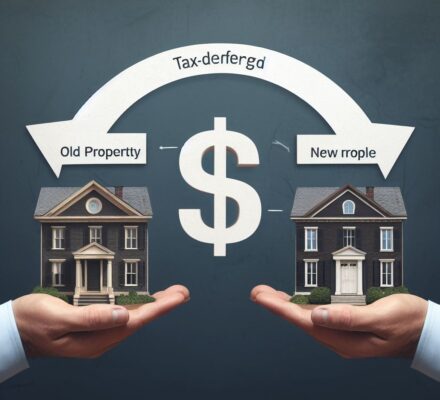Looking to save on taxes while exchanging properties? Want to know the proven strategies for tax-free 1031 exchanges? Well, look no further. This article has got you covered.
Wondering how to identify eligible properties, determine the optimal timing, and understand the 1031 exchange process? We’ve got the answers.
With the help of a qualified intermediary and alternative tax-saving strategies, you can maximize your savings.
So, let’s dive in and learn the ins and outs of tax-free 1031 exchanges.
Key Takeaways
- Research the real estate market and gather information about eligible properties for a 1031 exchange
- Consider market conditions and personal financial goals when determining the optimal timing for the exchange
- Understand and follow the 1031 exchange process, including finding a qualified intermediary
- Explore alternative strategies for tax savings, such as DSTs, REITs, TIC arrangements, and cost segregation studies.
Identify Eligible Properties for Exchange
To begin identifying eligible properties for exchange, start by researching the real estate market in your desired location. This step is crucial as it will help you understand the current trends, property values, and potential investment opportunities. Utilize online platforms, consult local real estate agents, and attend open houses to gather information about properties that fit your criteria.
When researching, consider factors such as location, property type, and potential for growth. Determine your investment goals and evaluate whether the properties you find align with those objectives. Look for properties that have the potential to generate rental income or appreciate in value over time.
It is also important to keep in mind the requirements set by the IRS for a 1031 exchange. The property being exchanged must be held for investment or used in a trade or business. Ensure that the properties you consider meet these criteria to qualify for the tax benefits associated with a 1031 exchange.
Throughout the process, it’s advisable to work with a qualified intermediary who can guide you through the complexities of a 1031 exchange. They can provide valuable insights and ensure that all necessary documents and timelines are adhered to.
Determine the Optimal Timing for the Exchange
Once you have identified eligible properties for exchange, it’s important to determine the optimal timing for the exchange in order to maximize the tax benefits of a 1031 exchange. Timing is crucial when it comes to executing a successful tax-free exchange.
Here are some key factors to consider:
- Market Conditions: Keep an eye on the real estate market to gauge whether it’s a buyer’s or seller’s market. Selling in a seller’s market could fetch a higher price for your property, while buying in a buyer’s market may allow you to acquire a replacement property at a lower cost.
- Financial Planning: Consider your own financial goals and circumstances. Are you in need of immediate cash flow? Or are you looking for long-term investment growth? Understanding your financial objectives will help you determine the best time to execute the exchange.
- Exchange Deadlines: Remember that there are strict deadlines associated with a 1031 exchange. From identifying potential replacement properties to closing on the new property, make sure to stay within the required timeframes to avoid jeopardizing the tax benefits.
- Seasonality: Take into account any seasonal fluctuations that may affect the real estate market. Certain times of the year may offer better opportunities for buying or selling properties.
- Personal Considerations: Consider any personal factors that may impact the timing of your exchange, such as family commitments, relocation plans, or upcoming expenses.
Understand the 1031 Exchange Process
To successfully navigate a tax-free 1031 exchange, you need to understand the process involved. A 1031 exchange allows you to defer capital gains taxes by exchanging a property for another like-kind property. Here’s a breakdown of the 1031 exchange process:
| Step | Description |
|---|---|
| 1. | Identify the Replacement Property |
| 2. | List the Property for Sale |
| 3. | Find a Qualified Intermediary |
| 4. | Enter into the Exchange Agreement |
| 5. | Sell the Old Property |
| 6. | Acquire the Replacement Property |
| 7. | Complete the Exchange within the Timeframe |
The first step is to identify the replacement property that you intend to acquire. Next, you must list your current property for sale. It is crucial to find a qualified intermediary who will facilitate the exchange process and hold the proceeds from the sale of your property. Once you have chosen a replacement property, you must enter into an exchange agreement with the qualified intermediary. After that, you can sell your old property and use the proceeds to acquire the replacement property. It is essential to complete the entire exchange within the designated timeframe to qualify for tax deferral.
Understanding the 1031 exchange process is crucial for a successful tax-free exchange. By following these steps and working with professionals who specialize in 1031 exchanges, you can take advantage of this powerful tax strategy.
Utilize a Qualified Intermediary
Use a qualified intermediary to facilitate your tax-free 1031 exchange. A qualified intermediary is a crucial component of a successful 1031 exchange, as they play a vital role in ensuring compliance with IRS regulations. Here are five reasons why utilizing a qualified intermediary is essential:
- Expertise: Qualified intermediaries are well-versed in the intricacies of 1031 exchanges, ensuring that all transactions comply with the IRS guidelines.
- Risk Mitigation: By entrusting your exchange to a qualified intermediary, you minimize the risk of making mistakes or overlooking crucial details that could jeopardize the tax-free nature of the transaction.
- Security: Qualified intermediaries hold funds in a secure escrow account, protecting your exchange funds from being commingled with their own.
- Time Efficiency: A qualified intermediary can help streamline the exchange process, ensuring that deadlines are met and paperwork is properly filed.
- Peace of Mind: With a qualified intermediary handling the logistics of your 1031 exchange, you can have peace of mind knowing that a knowledgeable professional is overseeing the process.
Consider Alternative Strategies for Tax Savings
Explore other approaches to maximize tax savings.
While a tax-free 1031 exchange is a powerful tool for deferring capital gains taxes, there are alternative strategies that can further enhance your tax savings.
One option to consider is a Delaware Statutory Trust (DST). By investing in a DST, you can defer taxes on the capital gains from the sale of your property while diversifying your portfolio.
Another strategy is investing in a Real Estate Investment Trust (REIT). REITs allow you to pool your funds with other investors to invest in a diversified portfolio of income-generating properties. This can provide you with steady income and potential tax advantages.
Additionally, you may want to explore the option of a tenancy-in-common (TIC) arrangement. By entering into a TIC agreement, you can acquire fractional interests in large commercial properties, which can help you spread your risk and potentially reduce your tax liability.
Lastly, consider utilizing a cost segregation study. This study allows you to identify and accelerate the depreciation of certain components of a property, resulting in increased tax deductions.
Frequently Asked Questions
Can I Use a 1031 Exchange to Defer Taxes on Personal Property, Such as Artwork or Collectibles?
Yes, you can use a 1031 exchange to defer taxes on personal property like artwork or collectibles. This strategy allows you to exchange one property for another of like kind, deferring taxes on the gain.
How Long Do I Have to Identify Replacement Properties in a 1031 Exchange?
You have 45 days from the date of the sale of your property to identify replacement properties in a 1031 exchange. This allows you ample time to find suitable options for tax deferral.
Can I Exchange a Property I Inherited Through a 1031 Exchange?
Yes, you can exchange a property you inherited through a 1031 exchange. This allows you to defer capital gains taxes while acquiring a replacement property of equal or greater value.
What Happens if I Receive Cash or Other Non-Like-Kind Property During a 1031 Exchange?
If you receive cash or non-like-kind property during a 1031 exchange, it will be considered boot and may result in taxable gain. Be careful to ensure all proceeds are properly reinvested.
Are There Any Restrictions on the Type of Property I Can Exchange for in a 1031 Exchange?
There are restrictions on the type of property you can exchange for in a 1031 exchange. It must be like-kind property, meaning it has the same nature or character as the property you are selling.




